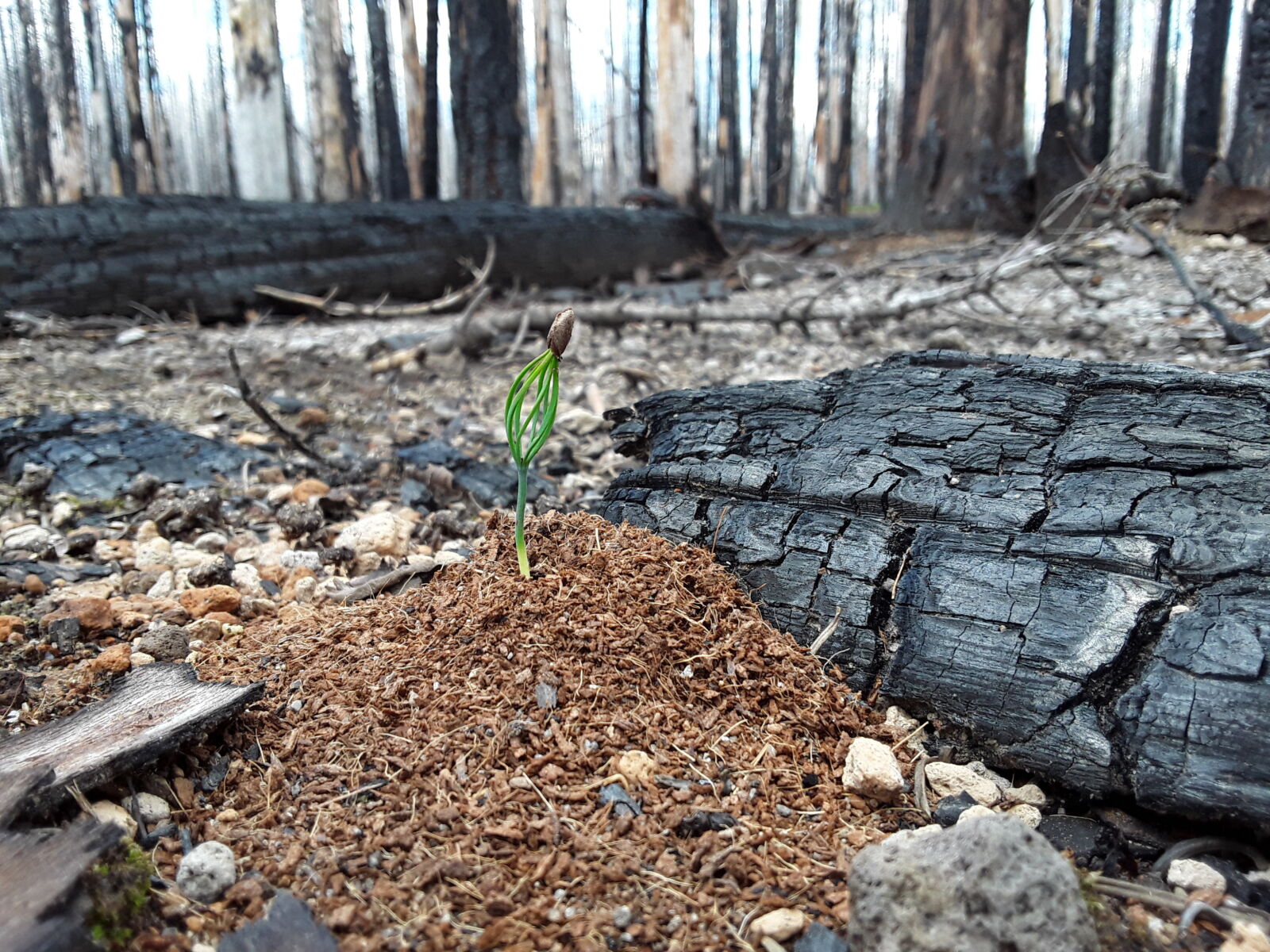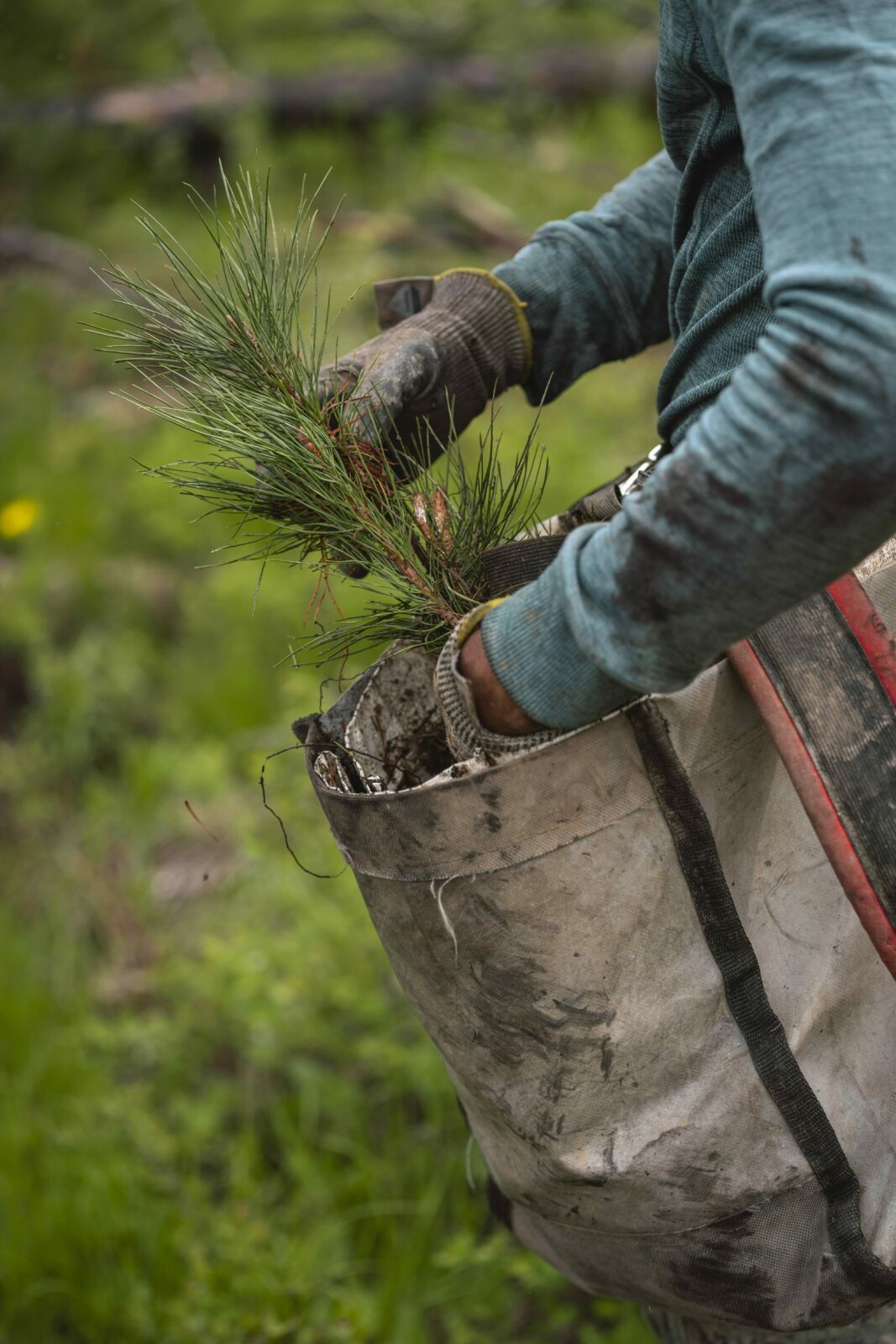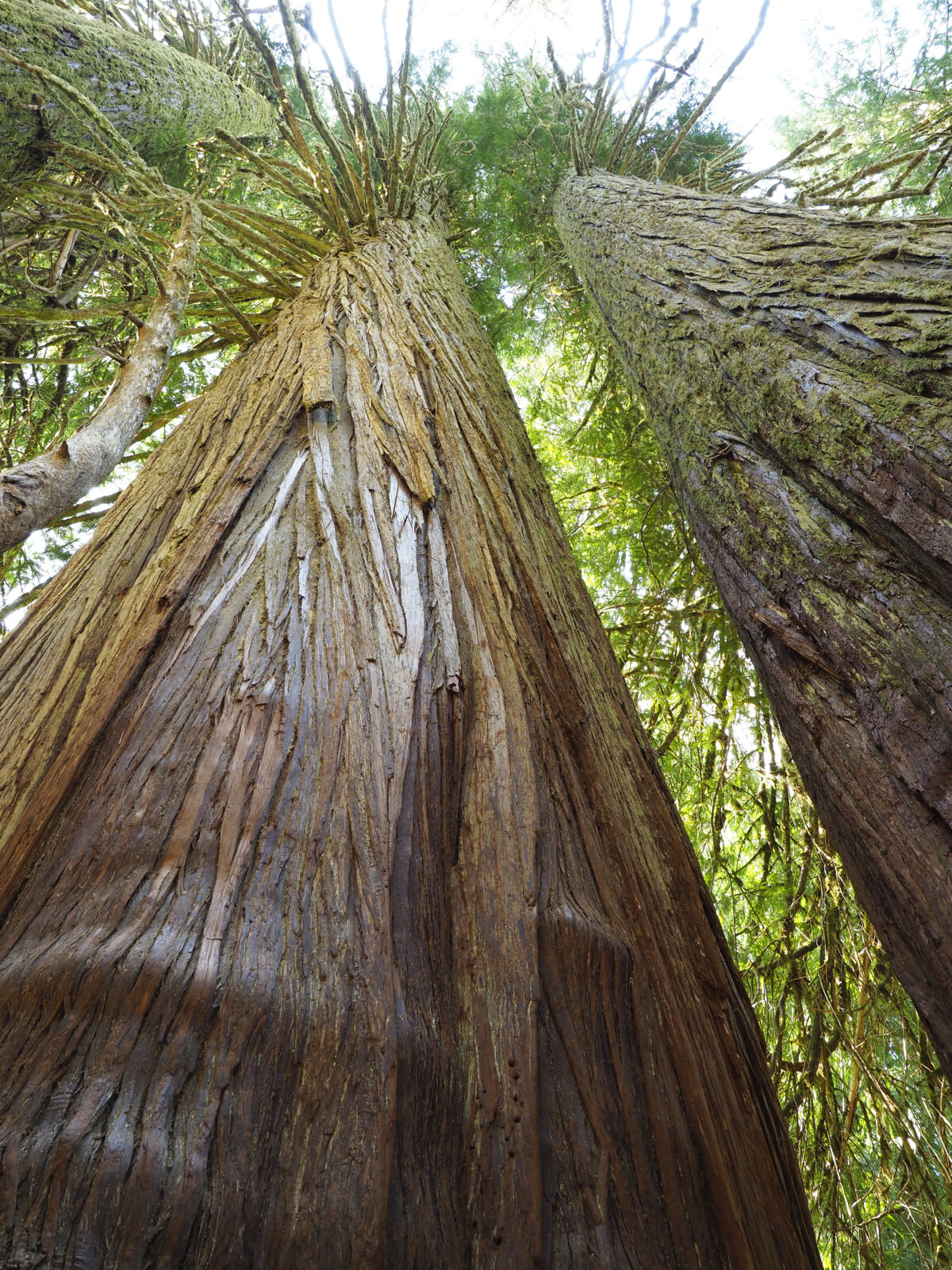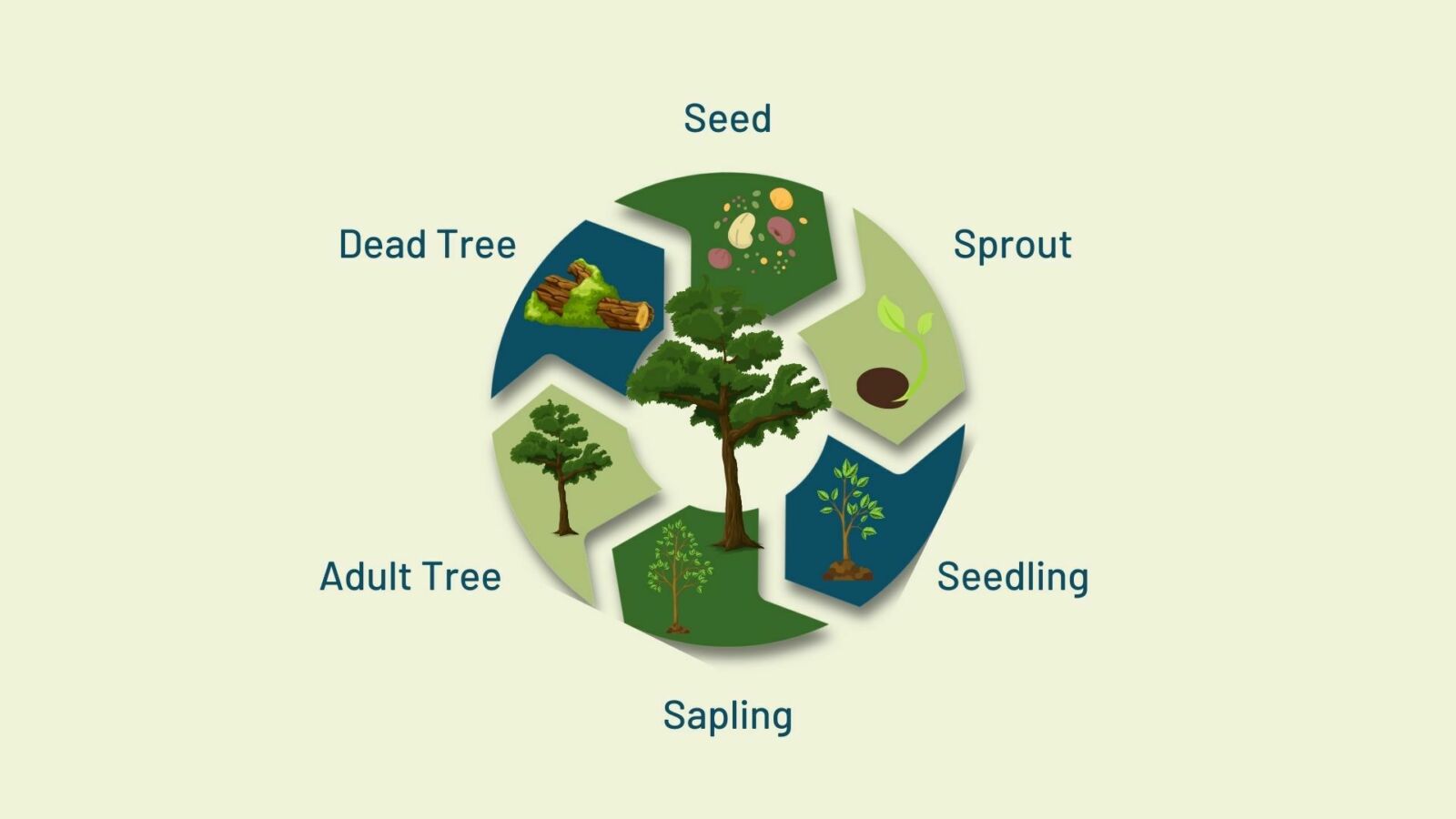The benefits of trees and forests are innumerable for people and ecosystems. Forests provide clean air and water, carbon sequestration, wildlife habitat, and create scenic places for us to recreate and enjoy.
When we talk about planting trees in National Forests, one may picture adult trees. Yet, reforestation is often about planting baby trees, or seedlings. So, to understand the holistic benefits of trees, let’s look at the entire life cycle of a tree!
Seed
Tree seeds evolve over time to suit their environment. That’s why they come in a variety of shapes and sizes to help them disperse. A seed can spread to new areas in nature by the wind, animals, and even other plants. Seeds hold all the nutrients necessary for a tree to form, ready for the right place and the right time. Tree magic starts at the seed!
Sprout

Photo by the U.S. Forest Service.
When a seed finds suitable conditions to grow, the next step is to germinate, or spout. These conditions vary between different species of trees. Some seeds require scarification, or the breaking down of the hard outer shell of the seed. Many seeds require cold and moist conditions. Once the right conditions are met, a seed can then begin to grow roots, take up water, and eventually sprout. A shoot appearing out of the top of the seed and breaking through the ground makes the seed a sprout.
Seedling

Photo by Dave Gardner.
The next stage in a tree’s life is as a seedling. This is when a tree begins to form. It’s also when a tree is most vulnerable to disease, grazing animals, and other risks. To increase the chance of seedling survival, our projects often plant seedlings in microsites , making use of logs and other natural items to shelter the budding tree and increase soil moisture. Our Reforestation program typically plants 1- to 3-year-old seedlings , selected for their resilience and locality, and grown at a U.S. Forest Service Nursery.
Sapling
Saplings are typically a few feet tall. At this stage, the tree is unable to reproduce and has flexible trunks and smooth bark. Saplings are shaped by the environments they grow in and are affected by conditions like light, moisture, and other climate variations. This is why it’s vital to plant the right seedling in the right place, increasing the chance that it will survive and thrive!
Adult Tree

Photo by iStock.com/sdbower.
Saplings can take anywhere from a decade or more to become an adult tree. This stage is characterized by a tree’s ability to produce seeds, enabling the continuation of the life cycle and the next generation of trees. Some species can live and reproduce for hundreds of years. For instance, a Douglas-fir starts to produce cones after about 12 to 15 years and can continue to do so for up to a thousand years!
Old, Declining Tree (Snag)
Photo by the NFF.
When a mature tree reaches the end of its life, it begins to decay and feeds nutrients back into its surroundings. Old and dead trees, or snags, are necessary for sustaining forest biodiversity. A tree in decline remains vital to plants, fungi, insects, and other parts of the forest ecosystem. It provides a source of both food and shelter, feeding the next generation of trees.
Planting Trees: New Life

Trees play important roles in forest ecosystems throughout every stage of their lives. Our Reforestation Program may focus on the early stages of a tree’s life, but it supports the full life cycle of a tree into future regeneration. Our Reforestation Program strives to ensure National Forest health for generations to come!
Cover photo by Shannon Smith.
--------
Did you learn something new in this blog post? We hope so. Every day, the NFF educates and inspires Americans about that most familiar and fundamental component of forests…trees! All our work on trees – from communications to field programs to carbon and more – depends on unrestricted gifts from people like you. Will you join us to ensure this critical work continues? Simply click here to join thousands of others who care about trees and much more.

